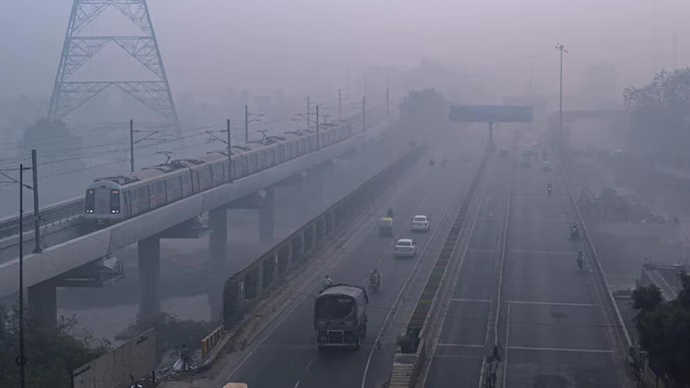New Delhi: Air quality in Delhi is becoming increasingly alarming, with the Air Quality Index (AQI) reaching 304 this morning, placing it in the “very poor” category, according to the Central Pollution Control Board (CPCB).
A brief improvement was noted earlier this week when the AQI dropped to the “poor” category on Tuesday, but pollution levels spiked again by Wednesday and remain at critical levels.
Numerous areas in the capital are experiencing “severe” air quality. Specific readings include Anand Vihar at 357, Ashok Vihar at 318, Bawana at 341, Burari Crossing at 320, Jahangirpuri at 354, and Mundka at 364. Other regions like Dwarka Sector 8 (332), Narela (312), and Shadipur (351) also reported severe pollution. Meanwhile, locations such as Chandni Chowk (293), Lodhi Road (261), and Jawaharlal Nehru Stadium (267) are classified as “poor” to “very poor.”
In the National Capital Region (NCR), Faridabad recorded an AQI of 176, indicating “moderate” air quality, while Gurugram (221), Greater Noida (227), Ghaziabad (260), and Noida (282) fall into the “poor” category. The ongoing smog in the Delhi-NCR area has resulted in reduced visibility and heightened health risks.
According to the CPCB, AQI values are categorized as follows: 0-50 is ‘good’, 51-100 is ‘satisfactory’, 101-200 is ‘moderate’, 201-300 is ‘poor’, 301-400 is ‘very poor’, 401-450 is ‘severe’, and above 450 is ‘severe plus’.
In response to the worsening air quality, the Supreme Court declined to lift restrictions under Stage 4 of the Graded Response Action Plan (GRAP), which aims to mitigate pollution levels. Key measures include prohibiting non-essential trucks—except those transporting essential goods or using cleaner fuels like LNG, CNG, BS-VI diesel, or electricity. Additionally, construction activities on public projects have been halted to reduce dust pollution.
Authorities are urging residents to limit outdoor activities and take precautions to protect their health. The dire pollution levels highlight the pressing need for sustainable and effective pollution control measures to address the ongoing crisis in the region.
